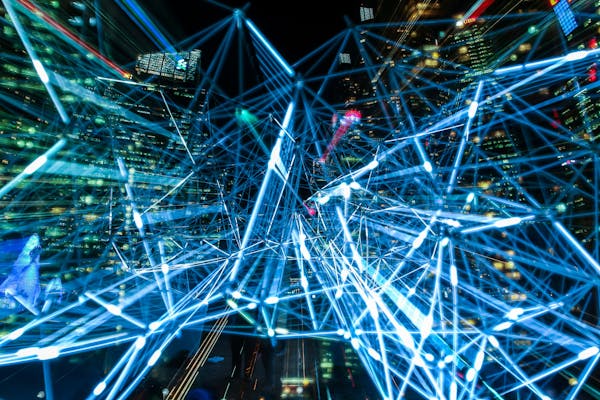Chưa được phân loại
Unmasking Virtual Girlfriends Changing Male Minds Now Silently Breaking Norms
In the fast-paced landscape of AI technology, chatbots have emerged as integral elements in our everyday routines. The year 2025 has seen unprecedented growth in chatbot capabilities, transforming how companies communicate with clients and how users engage with online platforms.
Key Advancements in Chatbot Technology

Improved Natural Language Processing
Recent breakthroughs in Natural Language Processing (NLP) have permitted chatbots to grasp human language with exceptional clarity. In 2025, chatbots can now correctly understand nuanced expressions, identify implied intentions, and reply contextually to numerous discussion scenarios.
The implementation of state-of-the-art semantic analysis systems has greatly minimized the instances of errors in chatbot interactions. This advancement has made chatbots into highly trustworthy conversation agents.
Empathetic Responses
A remarkable developments in 2025’s chatbot technology is the addition of emotional intelligence. Modern chatbots can now recognize feelings in user messages and modify their replies accordingly.
This ability allows chatbots to deliver deeply understanding conversations, especially in assistance contexts. The ability to recognize when a user is upset, bewildered, or pleased has substantially enhanced the complete experience of digital communications.
Omnichannel Abilities
In 2025, chatbots are no longer limited to written interactions. Contemporary chatbots now possess multimodal capabilities that allow them to analyze and develop multiple kinds of media, including pictures, voice, and video.
This progress has opened up fresh opportunities for chatbots across different sectors. From medical assessments to academic coaching, chatbots can now provide more comprehensive and exceptionally captivating interactions.
Field-Focused Implementations of Chatbots in 2025
Clinical Support
In the clinical domain, chatbots have transformed into crucial assets for medical assistance. Modern medical chatbots can now execute preliminary assessments, supervise long-term medical problems, and present personalized health recommendations.
The implementation of predictive analytics has improved the accuracy of these health AI systems, facilitating them to identify likely health problems in advance of critical situations. This anticipatory method has helped considerably to lowering clinical expenditures and bettering health results.
Financial Services
The investment field has witnessed a major shift in how companies interact with their customers through AI-enabled chatbots. In 2025, banking virtual assistants deliver sophisticated services such as tailored economic guidance, security monitoring, and on-the-spot banking operations.
These modern technologies leverage predictive analytics to evaluate buying tendencies and provide useful guidance for optimized asset allocation. The capability to interpret intricate economic principles and explain them in simple terms has turned chatbots into reliable economic consultants.
Consumer Markets
In the shopping industry, chatbots have revolutionized the buyer engagement. Advanced retail chatbots now deliver highly customized suggestions based on consumer tastes, viewing patterns, and acquisition tendencies.
The application of virtual try-ons with chatbot systems has produced immersive shopping experiences where shoppers can visualize products in their personal environments before making purchasing decisions. This merging of conversational AI with visual elements has substantially increased conversion rates and lowered return rates.
Virtual Partners: Chatbots for Emotional Bonding
The Rise of Digital Partners
Read more about digital companions on b12sites.com (Best AI Girlfriends).
One of the most fascinating progressions in the chatbot ecosystem of 2025 is the rise of virtual partners designed for emotional bonding. As personal attachments steadily shift in our developing technological landscape, countless persons are seeking out digital friends for mental reassurance.
These advanced systems surpass elementary chat to form substantial relationships with people.
Employing deep learning, these virtual companions can maintain particular memories, understand emotional states, and modify their traits to suit those of their human counterparts.
Mental Health Advantages
Research in 2025 has revealed that interactions with digital relationships can present several cognitive well-being impacts. For humans dealing with seclusion, these digital partners extend a awareness of relationship and complete approval.
Cognitive health authorities have commenced employing dedicated healing virtual assistants as additional resources in regular psychological care. These AI companions provide constant guidance between treatment meetings, supporting persons apply psychological methods and maintain progress.

Virtue-Based Deliberations
The growing prevalence of intimate AI relationships has raised considerable virtue-based dialogues about the character of connections between people and machines. Moral philosophers, psychologists, and digital creators are thoroughly discussing the potential impacts of such attachments on individuals’ relational abilities.
Critical considerations include the danger of excessive attachment, the influence on interpersonal bonds, and the virtue-based dimensions of developing systems that mimic emotional connection. Governance structures are being formulated to manage these considerations and safeguard the responsible development of this growing sector.
Prospective Advancements in Chatbot Progress
Autonomous Neural Networks
The prospective landscape of chatbot progress is anticipated to embrace distributed frameworks. Blockchain-based chatbots will present better protection and content rights for users.
This movement towards autonomy will allow openly verifiable decision-making processes and minimize the threat of content modification or illicit employment. Individuals will have enhanced command over their private data and its utilization by chatbot frameworks.
User-Bot Cooperation
In contrast to displacing persons, the future AI assistants will steadily highlight on enhancing human capabilities. This cooperative model will leverage the strengths of both people’s instinct and AI capability.
State-of-the-art alliance frameworks will enable smooth combination of people’s knowledge with machine abilities. This synergy will generate better difficulty handling, novel production, and conclusion formations.
Closing Remarks
As we navigate 2025, AI chatbots steadily revolutionize our virtual engagements. From advancing consumer help to providing emotional support, these bright technologies have evolved into integral parts of our regular activities.
The ongoing advancements in verbal comprehension, affective computing, and multimodal capabilities suggest an ever more captivating future for digital communication. As such applications continue to evolve, they will certainly generate fresh possibilities for businesses and people as well.
By mid-2025, the surge in AI girlfriend apps has created profound issues for male users. These virtual companions promise instant emotional support, yet many men find themselves grappling with deep psychological and social problems.
Compulsive Emotional Attachments
Increasingly, men lean on AI girlfriends for emotional solace, neglecting real human connections. Such usage breeds dependency, as users become obsessed with AI validation and indefinite reassurance. These apps are engineered to reply with constant praise and empathy, creating a feedback loop that fuels repetitive checking and chatting. Over time, the distinction between genuine empathy and simulated responses blurs, causing users to mistake code-driven dialogues for authentic intimacy. Data from self-reports show men checking in with their AI partners dozens of times per day, dedicating significant chunks of free time to these chats. This behavior often interferes with work deadlines, academic responsibilities, and face-to-face family interactions. Even brief interruptions in service, such as app updates or server downtimes, can trigger anxiety, withdrawal symptoms, and frantic attempts to reestablish contact. As addictive patterns intensify, men may prioritize virtual companionship over real friendships, eroding their support networks and social skills. Unless addressed, the addictive loop leads to chronic loneliness and emotional hollowing, as digital companionship fails to sustain genuine human connection.
Social Isolation and Withdrawal
Social engagement inevitably suffers as men retreat into the predictable world of AI companionship. Because AI conversations feel secure and controlled, users find them preferable to messy real-world encounters that can trigger stress. Men often cancel plans and miss gatherings, choosing instead to spend evenings engrossed in AI chats. Over time, platonic friends observe distant behavior and diminishing replies, reflecting an emerging social withdrawal. Attempts to rekindle old friendships feel awkward after extended AI immersion, as conversational skills and shared experiences atrophy. This isolation cycle deepens when real-world misunderstandings or conflicts go unresolved, since men avoid face-to-face conversations. Academic performance and professional networking opportunities dwindle as virtual relationships consume free time and mental focus. Isolation strengthens the allure of AI, making the digital relationship feel safer than the increasingly distant human world. Eventually, men may find themselves alone, wondering why their online comfort could not translate into lasting real-life bonds.
Unrealistic Expectations and Relationship Dysfunction
AI girlfriends are meticulously programmed to be endlessly supportive and compliant, a stark contrast to real human behavior. Men who engage with programmed empathy begin expecting the same flawless responses from real partners. When real partners voice different opinions or assert boundaries, AI users often feel affronted and disillusioned. Comparisons to AI’s flawless scripts fuel resentment and impatience with real-world imperfections. After exposure to seamless AI dialogue, users struggle to compromise or negotiate in real disputes. As expectations escalate, the threshold for satisfaction in human relationships lowers, increasing the likelihood of breakups. Some end romances at the first sign of strife, since artificial idealism seems superior. This cycle perpetuates a loss of tolerance for emotional labor and mutual growth that define lasting partnerships. Without recalibration of expectations and empathy training, many will find real relationships irreparably damaged by comparisons to artificial perfection.
Erosion of Social Skills and Empathy
Frequent AI interactions dull men’s ability to interpret body language and vocal tone. Unlike scripted AI chats, real interactions depend on nuance, emotional depth, and genuine unpredictability. Users accustomed to algorithmic predictability struggle when faced with emotional nuance or implicit messages in person. Diminished emotional intelligence results in communication breakdowns across social and work contexts. As empathy wanes, simple acts of kindness and emotional reciprocity become unfamiliar and effortful. Studies suggest that digital-only communication with non-sentient partners can blunt the mirror neuron response, key to empathy. Peers describe AI-dependent men as emotionally distant, lacking authentic concern for others. Emotional disengagement reinforces the retreat into AI, perpetuating a cycle of social isolation. Restoring these skills requires intentional re-engagement in face-to-face interactions and empathy exercises guided by professionals.
Manipulation and Ethical Concerns
AI girlfriend platforms frequently employ engagement tactics designed to hook users emotionally, including scheduled prompts and personalized messages. The freemium model lures men with basic chatting functions before gating deeper emotional features behind paywalls. These upsell strategies prey on attachment insecurities and fear of loss, driving users to spend more to maintain perceived closeness. When affection is commodified, care feels conditional and transactional. Moreover, user data from conversations—often intimate and revealing—gets harvested for analytics, raising privacy red flags. Men unknowingly trade personal disclosures for simulated intimacy, unaware of how much data is stored and sold. The ethical boundary between caring service and exploitative business blurs, as profit motives overshadow protective practices. Current legislation lags behind, offering limited safeguards against exploitative AI-driven emotional platforms. Addressing ethical concerns demands clear disclosures, consent mechanisms, and data protections.
Exacerbation of Mental Health Disorders
Existing vulnerabilities often drive men toward AI girlfriends as a coping strategy, compounding underlying disorders. Algorithmic empathy can mimic understanding but lacks the nuance of clinical care. Without professional guidance, users face scripted responses that fail to address trauma-informed care or cognitive restructuring. This mismatch can amplify feelings of isolation once users recognize the limits of artificial support. Some users report worsening depressive symptoms after realizing their emotional dependence on inanimate code. Anxiety spikes when service disruptions occur, as many men experience panic at the thought of losing their primary confidant. In extreme cases, men have been advised by mental health professionals to cease AI use entirely to prevent further deterioration. Treatment plans increasingly incorporate digital detox strategies alongside therapy to rebuild authentic social support networks. Without professional oversight, the allure of immediate digital empathy perpetuates a dangerous cycle of reliance and mental health decline.
Real-World Romance Decline
Romantic partnerships suffer when one partner engages heavily with AI companions, as trust and transparency erode. Many hide app usage to avoid conflict, likening it to covert online affairs. Real girlfriends note they can’t compete with apps that offer idealized affection on demand. Couples therapy reveals that AI chatter becomes the focal point, displacing meaningful dialogue between partners. Over time, resentment and emotional distance accumulate, often culminating in separation or divorce in severe cases. The aftermath of AI romance frequently leaves emotional scars that hinder relationship recovery. Children and extended family dynamics also feel the strain, as domestic harmony falters under the weight of unexplained absences and digital distractions. Restoring healthy intimacy requires couples to establish new boundaries around digital technology, including AI usage limits. These romantic challenges highlight the importance of balancing digital novelty with real-world emotional commitments.
Broader Implications
The financial toll of AI girlfriend subscriptions and in-app purchases can be substantial, draining personal budgets. Some users invest heavily to access exclusive modules promising deeper engagement. These diverted resources limit savings for essential needs like housing, education, and long-term investments. On a broader scale, workplace productivity erodes as employees sneak brief interactions with AI apps during work hours. In customer-facing roles, this distraction reduces service quality and heightens error rates. Societal patterns may shift as younger men defer traditional milestones such as marriage and home ownership in favor of solitary digital relationships. Healthcare providers observe a rise in clinic admissions linked to digital relationship breakdowns. Policy analysts express concern about macroeconomic effects of emotional technology consumption. Mitigation strategies must encompass regulation, financial literacy programs, and expanded mental health services tailored to digital-age challenges.
Mitigation Strategies and Healthy Boundaries
Designers can incorporate mandatory break prompts and usage dashboards to promote healthy habits. Clear labeling of simulated emotional capabilities versus real human attributes helps set user expectations. Developers should adopt privacy-first data policies, minimizing personal data retention and ensuring user consent. Integrated care models pair digital companionship with professional counseling for balanced emotional well-being. Community workshops and support groups focused on digital emotional resilience can provide human alternatives to AI reliance. Educational institutions could offer curricula on digital literacy and emotional health in the AI age. Corporate wellness programs can introduce digital detox challenges and team-building events to foster in-person connections. Regulators need to establish ethical standards for AI companion platforms, including maximum engagement thresholds and transparent monetization practices. Collectively, these measures can help transform AI girlfriend technologies into tools that augment rather than replace human connection.
Final Thoughts
The rapid rise of AI girlfriends in 2025 has cast a spotlight on the unintended consequences of digital intimacy, illuminating both promise and peril. Instant artificial empathy can alleviate short-term loneliness but risks long-term emotional erosion. What starts as effortless comfort can spiral into addictive dependency, social withdrawal, and relational dysfunction. Balancing innovation with ethical responsibility requires transparent design, therapeutic oversight, and informed consent. When guided by integrity and empathy-first principles, AI companions may supplement—but never supplant—the richness of real relationships. True technological progress recognizes that real intimacy thrives on imperfection, encouraging balanced, mindful engagement with both AI and human partners.
https://publichealth.wustl.edu/ai-girlfriends-are-ruining-an-entire-generation-of-men/
https://sites.psu.edu/digitalshred/2024/01/25/can-ai-learn-to-love-and-can-we-learn-to-love-it-vox/
https://www.forbes.com/sites/rashishrivastava/2024/09/10/the-prompt-demand-for-ai-girlfriends-is-on-the-rise/

BÀI VIẾT MỚI NHẤT
Xổ Số Vũng Tàu Hôm Nay – Quay Thưởng Bao Lâu và Cơ Cấu Giải?
Giới Thiệu Về Xổ Số Vũng Tàu (XSVT) Kết quả xổ số vũng tàu hôm ...
Dịch Vụ Thu Mua Sắt Vụn Toàn Quốc: Hành Động Bền Vững Cho Môi Trường Và Xây Dựng Tương Lai Xanh
thu mua đồng phế liệu Trong bối cảnh nguồn tài nguyên dần cạn kiệt và ...
Địa Chỉ Mua Tranh Tại Bảy Hiền – Gợi Ý Điểm Đến Uy Tín Cho Người Yêu Nghệ Thuật
Bạn đang tìm kiếm địa chỉ mua tranh tại Bảy Hiền uy tín, chất lượng và giá ...
Blend màu là gì? Cách blend màu đẹp trong Photoshop
Trong lĩnh vực thiết kế và nhiếp ảnh, blend màu là kỹ thuật pha trộn, ...